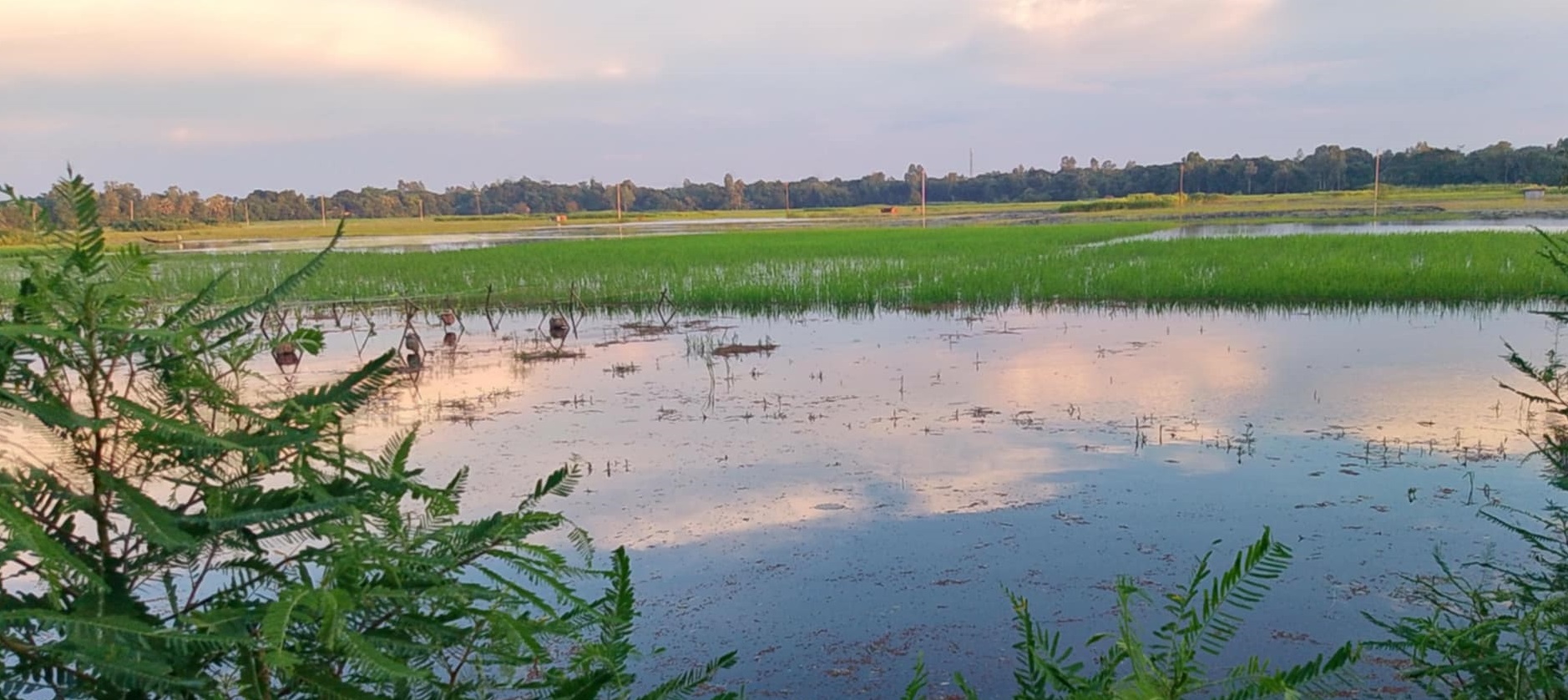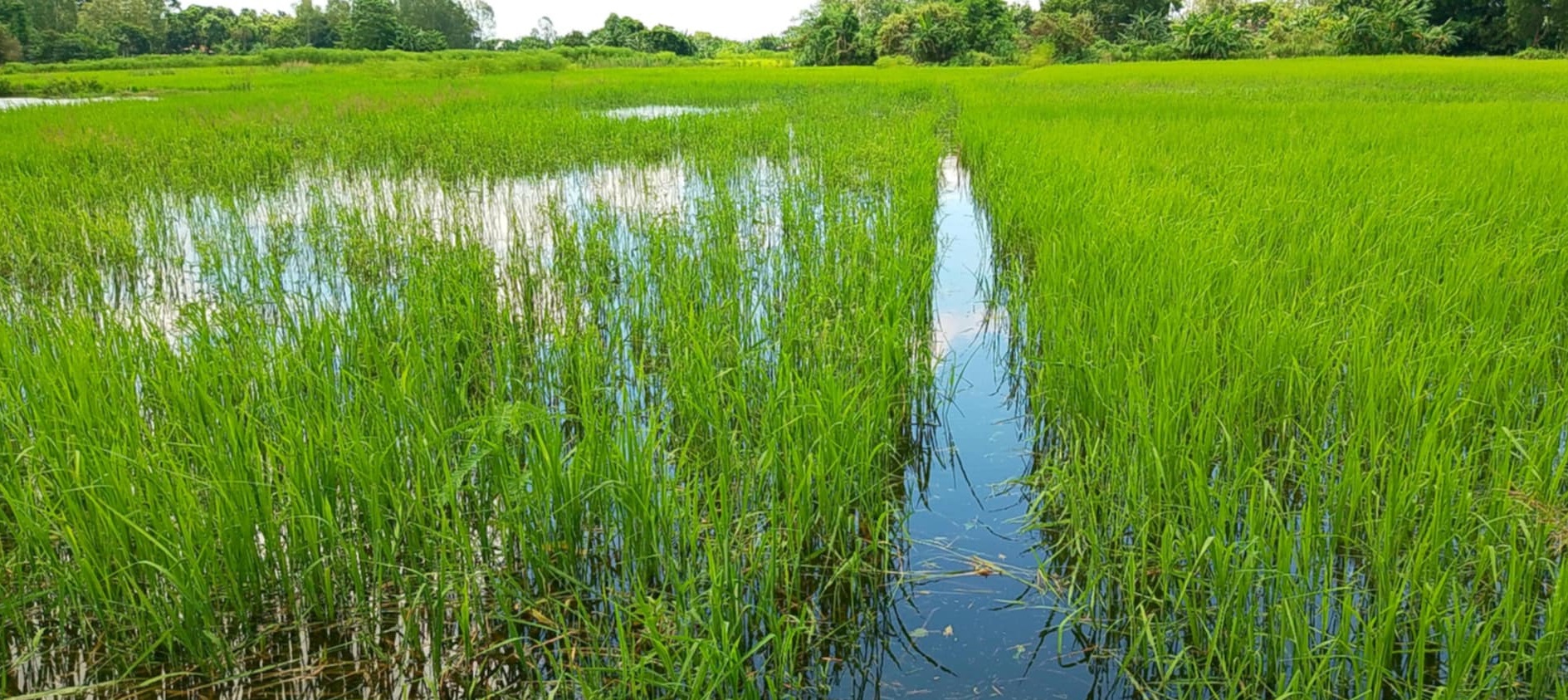By Sattaranjan Saha from Harirampur, Manikganj
The heritage of Manikganj is deeply tied to folk music and the famous hajari gur (date palm molasses). Mizan Gachi from Jhitka said, “Without the straw of Digha rice, date molasses cannot be made. The juice of date palms is boiled using the straw of Digha rice as fuel.”
Farmers in Manikganj cultivate Digha variety in low-lying lands where floodwaters rise. The rice plants grow along with the water level. The panicles appear in the month of Ashwin, and gradually the rice matures.
BARCIK, together with the Barundi Farmers’ Organization, has been conducting participatory varietals selection in Barundi village with aim to select local rice varieties that can adapt to climate change and local conditions. Through mutual exchange of experiences, farmers are encouraged to adopt environment-friendly practices, strengthen resilience against disasters, and preserve seed diversity.

Hajera Begum (56), a farmer from Patgramchar, Harirampur, said, “We cultivate many varieties of rice, vegetables, spices, pulses, and oilseeds.” “To cope with floods, we grow Hijol Digha, Molla Digha, Borga Digha, and Bhauyala rice” she added. She also went on saying, “When floodwaters rise, the plants grow taller. As the water recedes by the end of Bhadra, the rice plants bend down, but later they stand up again with their own strength. In Agrahayan, when the paddy ripens, we harvest.”
Nanu Paramonik, a farmer from Harihordia, said, “Every year floodwater inundates our fields. In Baishakh, we sow Parangi and Kalomanik Aush rice. Before floodwater covers the fields, we harvest the Aush. After that, Borga Digha, Hijol Digha, Bhauyala, and Digha rice remain.” “In this natural environment, enriched by silt, water, and air, these varieties grow well. Digha rice produces a lot of straw, which we use as cattle feed and fuel” he added.

He went on saying, “From our experience of adapting to floods and disasters, we not only continue farming but also share knowledge with other farmers. This helps in promoting organic practices, conserving crop diversity, and exchanging seeds.”
Farmers mentioned that Digha rice helps them to cope with natural disasters and floods, while vegetables are cultivated in higher lands. After the rainy season, they plant quick-yielding vegetables. Local resources and diverse seeds are their strongest tools for disaster resilience. Through sustainable agriculture, farmers preserve diversity and ensure food security.
